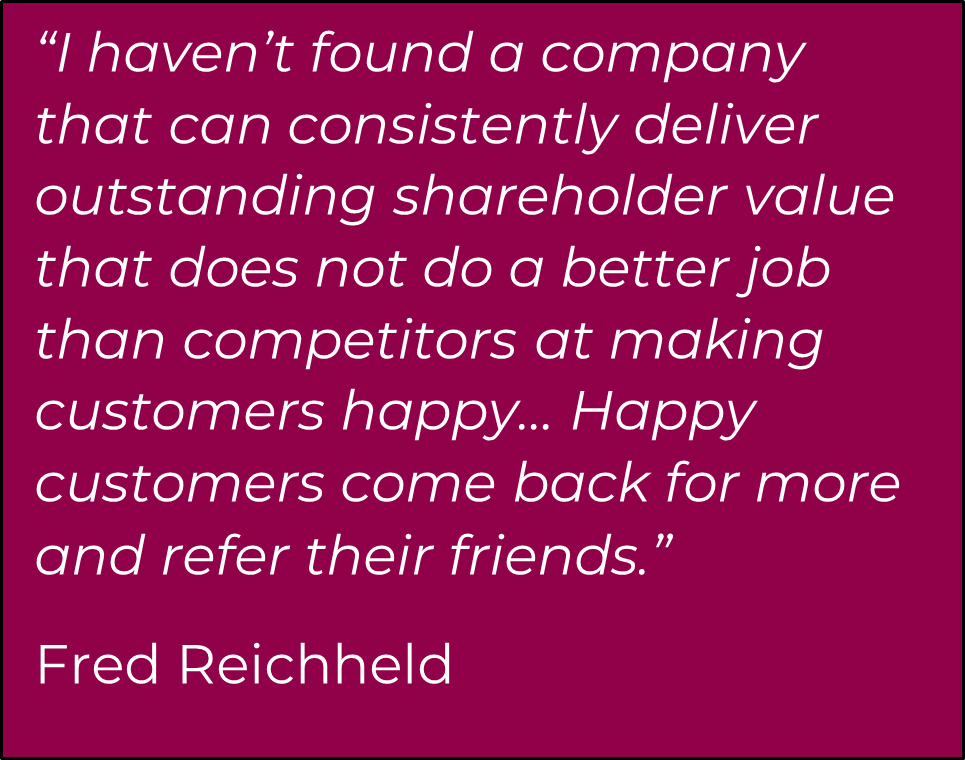In his recent blog post, Boost Business Success: Measuring & Rewarding Customer Engagement is a Game Changer, ImprintCX advisor Joseph Michelli explores the role customer engagement (as opposed to customer satisfaction) plays in predicting and driving repeat business and referrals. Customer Engagement Score (CES) is a measure often used to measure SaaS business success, but not widely used across other industries. As Joseph outlined, Customer Engagement refers to the level of involvement, interaction, and emotional connection customers have with your company. It includes customer perceptions and behaviors across all touchpoints, including their experiences with products, people, and technology.
Why is customer engagement so important?
Simply put, highly engaged customers are a reliable source of revenue as they are more likely to repeat purchases, while disengaged customers show little to no interest in your products, purchase less and may churn.
Unfortunately, there is no straight-forward, single metric calculation for Customer Engagement like NPS. Your customer engagement score must be tailored to your business. This means you need to consider and evaluate all factors that affect your customer engagement.
If you aren’t sure where to start, here’s a step-by-step process for calculating your Customer Engagement Score:

1. Define your engagement activities
The first and the most important step of calculating your Customer Engagement Score is defining your engagement activities. That is, how do your customers engage with you? Look across your customer journey.
Looking across your customer journey, engagement activities are unique for each business. Some may be:
- Email communication open rate
- Product usage or purchase frequency
- Call center contact frequency
- Subscription plan renewals and upgrades
- Engagement with key product features
2. Track all engagement activities
Once you’ve defined your engagement activities, it’s crucial to track them across the customer journey. Different approaches should be used depending on the activity, such as quantitative surveys, usage data, or email open rates.
3. Assign value to every engagement activity
Remember that not all engagement activities have the same weight. Some engagement activities may be more meaningful than others. You will need to assign value to each identified engagement event.
Typically, customer engagement scores are measured on a scale from 1 to 100, so you will want the total possible CES to add up to 100.
4. Calculate your customer engagement score
This is the easy part, simply add your engagement values together for each customer to get their customer engagement score.

What is a good Customer Engagement Score?
The higher the score, the stronger your engagement. Ideally, you want your score to be close to 100.

You will need to analyze your scoring, but a general rule of thumb to interpret the Customer Engagement Score is:
- CES between 0-40 – Very disengaged
customers, most likely to churn or purchase more frequently from others - CES between 41-75 – Somewhat engaged
customers, usually purchase from a mix of competitors, may churn if a better
value found - CES between 76-100 – Very engaged customers
In summary
To drive increased engagement, growth and business success consider asking the following questions or similar questions to identify customer engagement drivers:
- What type of customers have the highest customer engagement score?
- What value do your highly engaged customers receive from your product?
- What are the main differences between your highly engaged and disengaged customers?
Customer engagement is a differentiator that will set your organization apart. Here at ImprintCX, we understand the keys to successful CX programs and can support you along the way. Let’s get started.